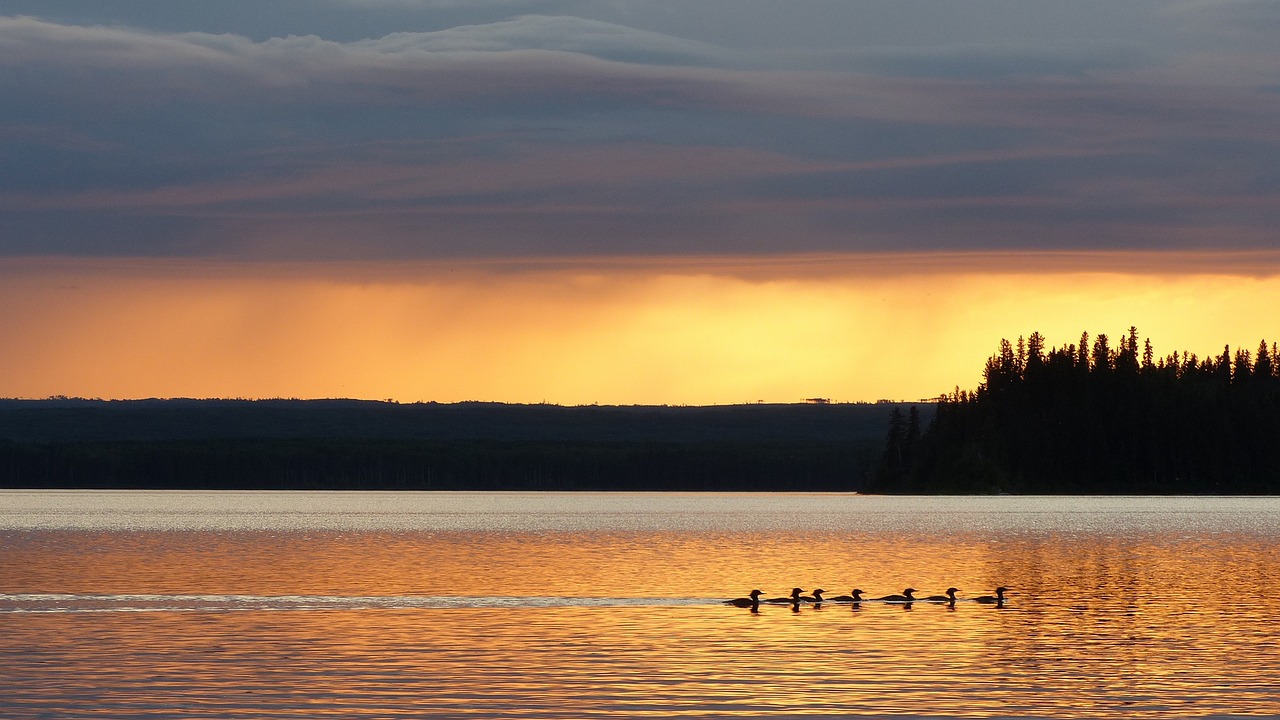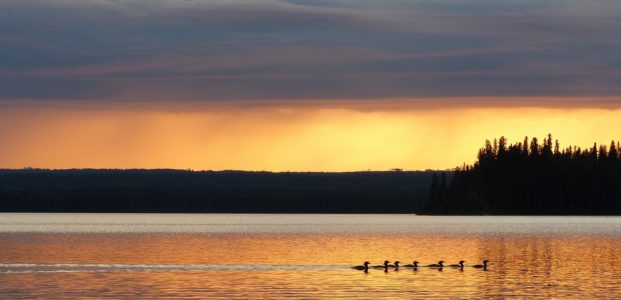Background to the Quill Lakes controversy
The Quill Lakes area of Saskatchewan contains three lakes: Big Quill Lake, Mud Lake and Little Quill Lake. High rainfall and surface runoff created by excess stormwater have contributed to the merging the lakes in some instances. The water level in the lakes has been observed to be rising and in October 2017 approximately 60,000 acres of land were flooded.
In 2017, the Quill Lakes Watershed Association (QLWA) proposed to construct a drainage diversion channel, called the Common Ground Drainage Diversion Project, which would redirect surface water from Kutawagan Lake and Pel Lake towards Last Mountain Lake. The proposed channel would have been about 25 km long, 1 m wide (bottom width) and would have had a side slope ratio of 3:1 (approximately 18.46˚ angle). The estimated amount of water diverted, according to QLWA, would have been 7,000,000 m3.
The Saskatchewan Minister of Environment concluded that no assessment would be required since the proposed project did not meet the criteria triggering an environmental impact assessment under Saskatchewan’s Environmental Assessment Act.
In response, in late 2017, the Saskatchewan Alliance for Water Sustainability (SAWS) and Saskatchewan Environmental Society (SES) petitioned Environment and Climate Change Canada to conduct a federal environmental assessment of the project’s potential damages.
In January 2018, in further response, Pasqua First Nation sought an application for judicial review against the decision to exempt the project from a provincial environmental assessment, arguing that they had not been adequately consulted prior to this decision. Pasqua also sought an injunction against the project.
QLWA ultimately dropped the project that same month, stating that it missed the deadline for construction in the spring. The QLWA stated it would continue to work on a solution and will comply with all necessary regulatory steps.
Saskatchewan’s freedom of information regime and its importance to environmental groups
The Freedom of Information and Protection of Privacy Act (FOIP) and The Local Authority Freedom of Information and Protection of Privacy Act (LA FOIP) allow any person to access records in the possession or under the control of a government institution or local authority in Saskatchewan and it sets out privacy rules for how local authorities as well as government institutions may use, obtain and release personal information. Once a request has been submitted to the relevant institution, it has 30 days to provide an answer.
FOIP and LA FOIP are important for environmental groups as these statutes allow groups to request and obtain crucial information about projects and developments that could potentially damage ecosystems. They allow environmental groups to ensure that due diligence is performed by government agencies and companies in order to preserve Canadian ecosystems.
Request for information unsuccessful
On November 1, 2017, Jeff Olson, on behalf of SAWS, requested information about the Common Ground Drainage Diversion Project from QLWA pursuant to provincial freedom of information legislation. Part of the information he sought was the records of the project discussions held between QLWA and the Government of Saskatchewan Working Group at meetings between April 2017 and July 2017. Since Mr. Olson did not receive an answer from QLWA, he submitted a request for review to the IPC. On January 26, 2018, the IPC found that it did not have any jurisdiction to undertake a review of the QLWA as it did not qualify as a government institution or local authority under either FOIP or LA FOIP. The IPC recommended that the Minister in charge for the Saskatchewan Water Security Agency ask for a legislative amendment to include watershed associations as local authorities pursuant to LA FOIP.
If legislative amendments are made to include watershed associations as local authorities under LA FOIP as requested, environmental groups such as SAWS and SES might be able to request more transparency from QLWA with respect to future diversion proposals. This might reduce the potential for further controversy between environmental groups, First Nations, QLWA, and government agencies.
Furthermore, freedom of information requests might bring more transparency to why particular discretionary decisions are being made under environmental legislation. According to media reports, the communications obtained by Mr. Olson with respect to project discussions between QLWA and the Government of Saskatchewan Working Group depicted a “cozy” relationship between QLWA and the Minister of Environment and the Water Security Agency. They shed a different light on the approval of the proposed 25 km water diversion initially obtained and raised questions about the effectiveness of applicable environmental assessment legislation. In bringing light to such controversies, freedom of information legislation plays a crucial role.


